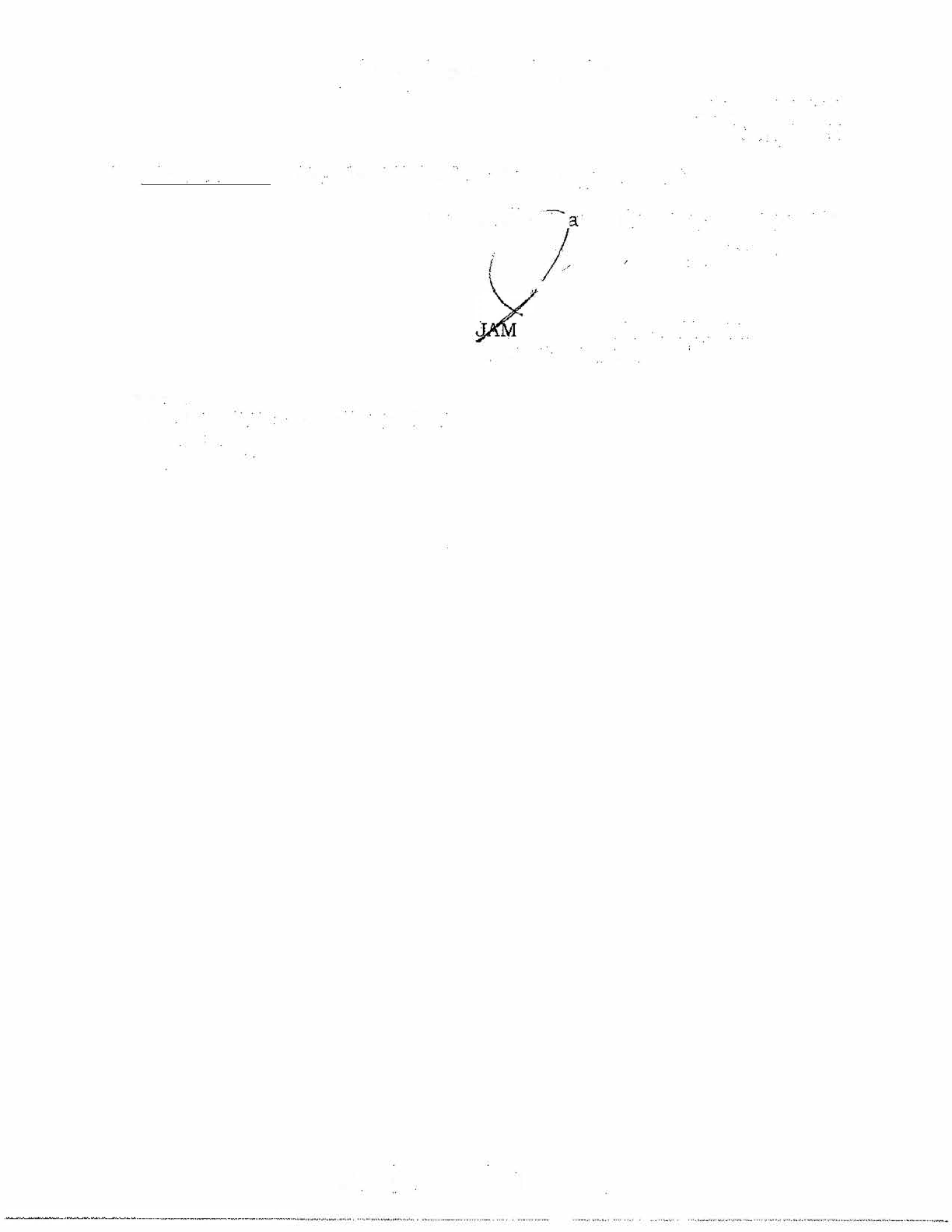
UNCLASSIFIED
CHAIRMAN OF THE JOINT
CHIEFS OF STAFF
INSTRUCTION
UNCLASSIFIED
DOM/SJS
DISTRIBUTION: A, B, C, S
CJCSI 5760.01B
26 April 2023
RECORDS AND INFORMATION MANAGEMENT POLICY
References:
See Enclosure B
1. Purpose. In accordance with references a through cc, this instruction
establishes policy and identifies organizational responsibilities as they pertain
to information (regardless of format) lifecycle management (creation,
maintenance, use, and disposition) practices and procedures.
2. Superseded/Cancellation. Chairman of the Joint Chiefs of Staff Instruction
(CJCSI) 5760.01A, 30 April 2007, “Records Management Policy for the Joint
Staff and Combatant Commands,” is hereby superseded.
3. Applicability. This instruction applies to all members within the Joint Staff,
the Unified Combatant Commands (CCMDs) and their subordinates, and
members of any department, organization, or agency (military or government)
within the Department of Defense (DoD) that is responsive to the Office of the
Chairman of the Joint Chiefs of Staff (OCJCS).
4. Policy
a. This policy requires the establishment, execution, and maintenance of
an economically sound and efficient electronic information management
program that complies with current rules and guidance detailed in reference h
and implemented in reference c with approved electronic information systems
(EIS). Compliance will secure the reliability, authenticity, integrity, usability of
content, and context that defines an efficient records and information
management (RIM) program.
b. To establish an efficient and economical RIM program, agencies must:
(1) Establish internal policies and standard operating procedures that
are in accordance with (IAW) applicable policies, statutes, and regulations.
UNCLASSIFIED
CJCSI 5760.01B
26 April 2023
2
UNCLASSIFIED
(2) Follow telework security protocols by ensuring there is a mutual
understanding of RIM responsibilities as it pertains to working from
government-approved alternate worksites.
(3) Assign Records Liaisons (RLs) and Records Custodians (RCs) and
assign duties/responsibilities as it pertains to an all-inclusive means of
lifecycle management regarding information and safeguarding procedures.
Management includes conducting periodic staff assistance visits (SAVs) within
individual organizations.
(4) Create, preserve, and make accessible records containing
documentation of the organization’s functions, policies, decisions, procedures,
and essential transactions.
(5) Maintain a temporary print-and-file recordkeeping file system for
documents as they prepare for their transition into electronic recordkeeping
formats.
(6) Initiate and enforce protocols as it pertains to converting paper
records to electronic formats by following National Archives and Records
Administration (NARA) criteria for digitizing temporary and permanent records.
(7) Design and implement an “Essential” records program and align
with continuity of operations plans to protect legal and financial rights of the
Joint Staff when operating under national security or other emergencies.
(8) Conduct inventories of all records and include analysis on all EIS
used to create, store, and receive records.
(9) Collaborate and consult with key technology assets (including third
party commercial providers), the chiefs of information, knowledge management
(KM), data management (DM), and artificial intelligence (AI), as well as legal,
security, privacy, and Freedom of Information Act (FOIA) representatives, to
incorporate relevant and compliant record management requirements and
methodologies.
(10) Execute sound social media practices.
(11) Apply a sound Records Risk Management program by identifying,
analyzing, evaluating, and reporting risks to records processes and systems to
mitigate chances of information being lost, damaged, or for other reasons
considered no longer usable, reliable, authentic, complete, or meeting the
purposes of the Joint Staff.

UNCLASSIFIED
CJCSI 5760.01B
26 April 2023
3
UNCLASSIFIED
(12) Distinguish between Capstone and Non-Capstone officials and
manage e-mails IAW the current rules and regulations that govern protecting
and dispositioning e-mail information using the “Capstone Approach.”
5. Definitions. See Glossary.
6. Responsibilities. See Enclosure A.
7. Summary of Changes. Last published in 2007, CJCSI 5760.01A required
extensive revision. Substantive changes include:
a. Adds the role of the Senior Agency Official for Records Management
(SAORM) and promulgates the delegation of that role to the Director of
Management.
b. Describes the support roles that other offices—such as privacy, public
affairs (PA), information technology, KM, legal counsel— provide to records
management (RM), and encourages Records Officers (ROs) to collaborate with
these entities within their commands.
c. Directs RIM stakeholders to create electronic RM, essential records, and
RM risk management programs, and designate RLs and RCs to support RM
efforts.
d. Changes the title to reflect the modernization of current RM practices
and incorporates OMB/NARA Directives M-19-21 and M-23-07, which directed
the transition to electronic recordkeeping.
e. Rescinds JS Form 33, “CCMD RM Annual Report to CJCS.”
f. Updates References and Glossary.
8. Releasability. UNRESTRICTED. This directive is approved for public
release; distribution is unlimited on the Non-secure Internet Protocol Router
Network. DoD Components (to include the CCMDs), other Federal agencies,
and the public may obtain copies of this directive through the Internet from the
CJCS Directives Electronic Library at <http://www.jcs.mil/library>. Joint
Staff activities may also obtain access via the Secure Internet Protocol Router
Network directives Electronic Library web sites.

Enclosures
.•
0
z " r,
/ �
4

UNCLASSIFIED
CJCSI 5760.01B
26 April 2023
A-1 Enclosure A
UNCLASSIFIED
ENCLOSURE A
KEY ROLES AND RESPONSIBILITIES
1. Chairman of the Joint Chiefs of Staff
a. Develops, implements, evaluates, and refines RIM policies to ensure RIM
compliance.
b. Appoints the Director of Management as the SAORM for the Joint
community.
c. CJCS has delegated authority for providing supervision and oversight
regarding the development, implementation, evaluation, and refinement of
Joint Staff community RIM policies and procedures to the SAORM.
2. Office of the Chairman of the Joint Chiefs of Staff. In addition to
requirements laid out in paragraph 4 of the base instruction, OCJCS shall
conduct the following activities to support RIM programs.
a. Legal Counsel. Serves as the official(s) responsible for providing legal
advice and assistance to agency officials and employees. Provides advice to the
agency records officer and others regarding the legal value of the agency’s
records and the issue of public access to them.
b. Inspector General. The Joint Staff Inspector General (IG) Office is
responsible for audits pertaining to RM procedures and compliance (including
safeguarding against waste and fraud). The IG identifies records and report
deficiencies and provides helpful solutions to resolve the deficiencies within
those programs.
c. Joint Staff History and Research Office. Collaborates with records
managersto ensure preservation of organization information as information
progresses through its lifecycle.
d. Joint Staff Privacy Office. Collaborates with records managers and
ensures practices are in place to mitigate risk regarding DM and privacy
concerns. Joint Staff Privacy Office also provides advice and assistance on the
access to stored classified records.
e. Public Affairs. The OCJCS/PA office oversees collection and protection
of social media records and adheres to social media records retention policy.
OCJCS/PA also plays a key role in the transition of the CJCS and Top 4 for

UNCLASSIFIED
CJCSI 5760.01B
26 April 2023
A-2 Enclosure A
UNCLASSIFIED
incoming and outgoing information collection. Serves as the official office
responsible for coordinating information releasable to the public (news
releases, speeches, media presentations). Works with the records liaison to
ensure release of information is compliant with Federal and agency PA
directives.
3. Directorate of Management. In addition to requirements laid out in
paragraph 4 of this policy, the Directorate of Management (DOM) will conduct
the following activities to support RIM programs:
a. Senior Agency Official for Records Management. Assumes delegated
responsibilities from the CJCS and supports the Federal Records Act; enforces
RIM statutes, regulations, and policies; and provides the Joint Staff community
with strategic direction regarding the implementation of economically sound
and efficient record management programs.
b. Secretary, Joint Staff. The Secretary, Joint Staff (SJS), through the
Chief, Joint Staff Information Management Division (IMD), will provide for the
proper creation, maintenance, disposition, and preservation of Joint Staff and
CCMD records through direction of an active Joint Staff and CCMD RM
program.
c. Chief, Joint Staff Information Management Division. The Chief, Joint
Staff Information Management Division (IMD) is responsible for the
implementation and supervision of the Joint Staff RIM program and
collaborates with the SAORM, SJS, and Joint Staff Chief Records Officer
(JSCRO) to ensure compliance.
d. Joint Staff Chief Records Officer. The JSCRO is a dual-hatted position
and is responsible for the execution of the Joint Staff RIM program, as well as
the oversight and assessment of CCMD RIM programs. The JSCRO is primarily
responsible for:
(1) Oversight and execution of the Joint Staff RIM Program and serves
as the Chief of the IMD Records and Research Branch (RRB).
(2) Assigning RM duties to RRB staff to assist in the oversight of the
Joint Staff RIM program by conducting periodic SAVs and reporting findings
and providing recommendations for improvements.
(3) Appointing members of RRB to serve in critical areas of RIM
programs to provide advice, assistance, and training to mission essential
programs (including Essential Records Program and Release of Information).

UNCLASSIFIED
CJCSI 5760.01B
26 April 2023
A-3 Enclosure A
UNCLASSIFIED
(4) Serving as the mentor and liaison to Joint Staff Records Officers
(JSROs), military, and government agencies.
(5) Ensuring RIM training for the Joint Staff community is available
and reflects the most up-to-date relevant information.
(6) Providing advice and assistance to departing Senior Leaders to
ensure out-briefings are available and tenure records are captured and
retained under the “Capstone Approach” rules and guidelines.
(7) Collaborating with the Joint Staff Declassification Branch to provide
support for Automated Declassification Reviews, FOIA searches, and guidance
on Joint Staff and CCMD RM.
(8) Operating as the primary point of contact for all annual reporting
requirement activities.
(9) Assisting CCDRs in identifying and implementing RM Plans of
Action and Milestones to ensure RM compliance and successful transition to
electronic RM that meet NARA current guidelines.
e. Knowledge Management. Joint Staff KM and RM actively collaborate
and develop a close working relationship as it pertains to implementing
knowledge practices through socialization, internalization and externalization,
or a combination of both. KM supports RM through the development of
innovation and RM supports KM by implementing the practices developed and
instilling trustworthiness of content management.
4. Combatant Commanders. CCDRs are responsible for the establishment of
command RIM programs while receiving guidance and assistance from the
JSRO and support from the SAORM. CCDRs will manage all records IAW this
policy and associated manuals.
a. CCDRs will establish an internal CCMD RM Program that provides
lifecycle management of CCMD records recorded on any media, to include
records identification, maintenance, storage, retirement, and destruction.
b. CCDRs will identify and assign/hire a command records manager
(CRM), who must obtain and retain the NARA Agency Records Officer
Credential (AROC) within six months after selection and acceptance of the
position.

UNCLASSIFIED
CJCSI 5760.01B
26 April 2023
A-4 Enclosure A
UNCLASSIFIED
c. CCDRs will ensure that AROC designees attend training as required,
and that renewal is executed every three years to remain in AROC compliance.
d. The CRM will administer the CCMD RM Program for all command
records to facilitate collection of all relevant documentation, including Top
Secret-Sensitive Compartmented Information, Special Access Programs, and
Alternative Compensatory Control Measures records.
e. CCDRs will ensure personnel engaged in CCMD RM are trained to meet
joint RM requirements, including conducting periodic assistance visits to all
subordinate joint activities and agencies.
f. CCDRs will provide for records collection and retention in mobilization
planning and crisis action procedures, to include command operations center
records; ensure inclusion of RM annexes in appropriate operations plans,
concept plans, and operations orders specifying how records will be collected
and retained.
g. CCDRs will ensure the adequacy of the command’s RM program from a
historical perspective; facilitate liaison between the historian and the CRM to
ensure key documents, including electronic records, are reviewed, organized,
and secured in accordance with reference a.
5. Defense Information System Agency. Provides and collaborates with Joint
Service Provider representatives command and control, information sharing
capabilities, broad-spectrum information accessibility, organizational
frameworks, and operating processes that aligns with current capabilities and
protects against attempts to damage the organizations networks.
6. Joint Staff Records Liaison/Custodian, Other Personnel, and Separate
Offices. In addition to requirements laid out in paragraph 4 of this base
instruction, all organizations shall conduct the following activities to support
the RIM program:
a. Joint Staff Directorates and Separate Offices. Joint Staff Directorates
and heads of separate offices are responsible for implementation and
supervision of the Joint Staff RIM Program within their staff elements.
b. Heads of Other Joint Staff Activities. Chairpersons, presidents, project
managers, directors, and heads of special boards, study or working groups,
committees, commissions, councils, and other projects responsive to the CJCS
are responsible for implementation and supervision of the Joint Staff Records
Management Program within their staff elements.

UNCLASSIFIED
CJCSI 5760.01B
26 April 2023
A-5 Enclosure A
UNCLASSIFIED
c. Records Liaison. The RL supports the RO in all matters regarding RIM
programs. The RL performs the day-to-day administrative requirements and
serves as a liaison between the organization and the organization’s RO.
d. Records Custodian. The RC collaborates with the RL and ensures
privacy compliance of records by managing personnel access to information.
The RC is responsible for capturing and updating best practices and
procedures, as well as managing and fulfilling records request.
e. Joint Staff Personnel. All Joint Staff personnel are responsible for
familiarizing themselves with the policies and procedures contained in this
Instruction. This includes maintaining personal papers separate from official
files, removing from records only those items authorized, and disposing of
materials only in accordance with disposition standards.
7. Service Components. The Service components are responsible for providing
the Joint Staff and CCMD RM Programs with administrative and logistical
support consistent with reference e.
UNCLASSIFIED
CJCSI 5760.01B
26 April 2023
A-6 Enclosure A
UNCLASSIFIED
(INTENTIONALLY BLANK)
UNCLASSIFIED
CJCSI 5760.01B
26 April 2023
B-1 Enclosure B
UNCLASSIFIED
ENCLOSURE B
REFERENCES
a. CJCSI 5320.01 Series, “Guidance for the Joint History Program”
b. CJCSI 5780.01 Series, “Joint Knowledge Management Policy”
c. CJCSM 5760.01 Series, “Joint Staff and Combatant Command Records
Management”
d. DoD 5015.2-STD, 25 April 2007, “Design Criteria Standard for Electronic
Records Management Software Applications”
e. DoD 5100.03, 9 February 2011 (incorporating change 1, 7 September 2017),
“Support of the Headquarters of Combatant and Subordinate Joint Commands”
f. DoD 5144.02, 21 November 2014, as amended, “DoD Chief Information
Officer (DoD CIO)”
g. DoD 5400.11-R, August 1993, “Department of Defense Privacy Program,”
authorized by DoD Directive 5400.11, 16 November 2004
h. DoDI 5015.02, 17 August 2017, “DoD Records Management Program”
i. DoDI 5230.09 25 January 2019, “Clearance of DoD Information for Public
Release”
j. DoDI 5230.29 CHG#2, 8 February 2022, “Security and Policy Review of DoD
Information for Public Release”
k. DoDI 5400.17 CHG#1, 24 January 2023, “Official Use of Social Media for
Public Affairs Purposes”
l. DoDI 8170.01, 24 August 2021, “Online Information Management and
Electronic Messaging”
m. DoDI 8500.01CHG #1, 7 October 2019, “Cybersecurity”
n. Hatch Act Guidance on Social Media
o. M-12-18, April 2016, “Success Criteria for Managing Email Records in
Compliance with the Managing Government Records”
UNCLASSIFIED
CJCSI 5760.01B
26 April 2023
B-2 Enclosure B
UNCLASSIFIED
p. M-19-21, 28 June 2019, “Transition to Electronic Records”
q. M-23-07, 23 December 2022, “Update to Transition to Electronic Records”
r. Memorandum for Pentagon Senior Leadership, 5 May 2021, “Creating Data
Advantage”
s. NARA Bulletin 2012-02, “Guidance on Managing Content on Shared Drives”
t. NARA Bulletin 2015-02, “Guidance on Managing Electronic Messages and
44 USC sec. 2911”
u. NARA Bulletin 2015-04, 15 September 2015, “Metadata Guidance for
Transfer of Permanent Electronic Records”
v. NARA Bulletin 2017-02, “Guidance on Senior Officials for Records
Management”
w. NARA Bulletin 2023-02, 5 January 2023, “Expanding the Use of a Role-
Based Approach (Capstone) for Electronic Messages”
x. NARA Essential Records Guide, August 2018
y. NARA Guidelines for Digitizing Archival Materials for Electronic Access
z. NIST Special Publication 800-46, June 2016, “Guide to Enterprise &
Telework and Remote Access Security”
aa. Presidential memo, 28 November 2011, “Managing Government Records”
bb. Title 36, Code of Federal Regulations, Chapter XII, “National Archives and
Records Administration,” Subchapter B, “Records Management”
cc. Title 44, U.S. Code, chapters 21, 29, 31, 33, and 35
UNCLASSIFIED
CJCSI 5760.01B
26 April 2023
GL-1 Glossary
UNCLASSIFIED
GLOSSARY
PART I – ABBREVIATIONS AND ACRONYMS
AI artificial intelligence
AROC Agency Records Officer Credential
CCDR Combatant Commander
CCMD Combatant Command
CFR Code of Federal Regulations
CJCS Chairman of the Joint Chiefs of Staff
CJCSI Chairman of the Joint Chief of Instruction
CJCSM Chairman of the Joint Chiefs of Staff Manual
CRM Command Records Manager
CUI Controlled Unclassified Information
DoD Department of Defense
DoDI Department of Defense Instruction
DM data management
EIS Electronic Information System
ERM Electronic Records Management
FOIA Freedom of Information Act
GRS General Records Schedule
IAW in accordance with
IG Inspector General
IMD Information Management Division
KM knowledge management
LC Legal Counsel
NARA National Archives and Records Administration
OCJCS Office of the Chairman of the Joint Chiefs of Staff
PA public affairs
RC Records Custodian
RIM records information management
UNCLASSIFIED
CJCSI 5760.01B
26 April 2023
GL-2 Glossary
UNCLASSIFIED
RL Records Liaison
RM records management
RO Records Officer
RRB Records and Research Branch
SAV staff assistance visit
SAORM Senior Agency Official for Records Management

UNCLASSIFIED
CJCSI 5760.01B
26 April 2023
GL-3 Glossary
UNCLASSIFIED
PART II – DEFINITIONS
Archive. To safely preserve inactive information in digital format.
Artificial intelligence. Implemented in Electronic Information System and
mimics human intelligence to perform tasks and can improve themselves based
on the data collected.
Capstone approach. The Capstone approach is a simplified form of electronic
e-mail management that allows for the capture and preservation of permanent
records from the e-mail accounts (including alias accounts) of officials at or
near the top of an agency or an organizational subcomponent.
Capstone Official. Capstone Officials are identified by duty position and scope
of work. Normally, Capstone Officials are the policy and decision makers of an
organization.
Content management. The process for collection, delivery, retrieval,
governance, and overall management of information in any format.
Classified information. Information that protects against unauthorized
disclosure and is marked to indicate its classification status.
Data. Raw, unorganized facts that needs to be processed. Data can be
something simple, random, and useless until assessed, organized, and
processed.
Data management. The collecting, organizing, protecting, and storing data so
it can be captured and analyzed for organization decisions making practices.
Disposition. Steps taken after federal records are determined no longer needed
in the workspace.
Electronic Information System. An approved information system where
information (records, electronic messages, etc.) is stored and made accessible
and retrievable.
Electronic records. Any information processed by using a computer or
government-issued mobile device and meets the criteria of a federal record.
Essential records. Records the Joint Staff will need to meet operational
responsibilities under national security emergencies or other emergency
conditions (emergency operating records) or protect the legal and financial

UNCLASSIFIED
CJCSI 5760.01B
26 April 2023
GL-4 Glossary
UNCLASSIFIED
rights of the Government and those affected by Government activities (legal and
financial rights records).
Essential Records Program. Policies, plans, and procedures the Joint Staff
develops and implements along with resources needed to identify, use, and
protect essential records. This is an important program element of this
agency’s emergency management function.
File. The act of placing information in its appropriate location.
Information. Data that is processed, organized, structured, and given context.
Joint Staff community. Joint Staff Directorates; Combatant Commands;
boards, committees, and councils under Joint Staff sponsorship; and any other
agency (military or government) who respond to and/or through the CJCS.
Knowledge management. Multidiscipline approach that integrates people and
processes enabled by tools throughout the information lifecycle to create
shared understanding, increase organizational performance, and improve
decision-making.
Metadata. Information describing the characteristics of data.
Non-record. Federally owned informational materials that do not meet the
statutory definition of records contained within title 44, U.S. Code, section
3301 or that are excluded from coverage by the definition. Excluded materials
are extra copies of documents and library or museum materials intended solely
for reference or exhibit.
Record. Information in any medium, including operational, logistical, support,
and other materials created or received by Department of Defence components
in training, contingency, and wartime operations as well as in all routine and
peacetime business.
Records management. The planning, controlling, directing, organizing,
training, promoting, and other managerial activities involved with respect to
records creation, maintenance, and use disposition.
Records system. Information system that captures, manages, and provides
access to records through time.
Retention. The act of classifying and storing records according to a defined
schedule.

UNCLASSIFIED
CJCSI 5760.01B
26 April 2023
GL-5 Glossary
UNCLASSIFIED
Risk. Effect of uncertainty.
Risk mitigation. A strategy used to prepare for and lessen the effects of
identified vulnerabilities and catastrophic threats.
Risk management. Identification, evaluation and prioritization of risks
followed by actionable plans to mitigate, monitor and control risk.
Staff assistance visit. A systematic approach to assessing and evaluating
agencies performance and ensuring compliance.
UNCLASSIFIED
CJCSI 5760.01B
26 April 2023
GL-6 Glossary
UNCLASSIFIED
(INTENTIONALLY BLANK)
